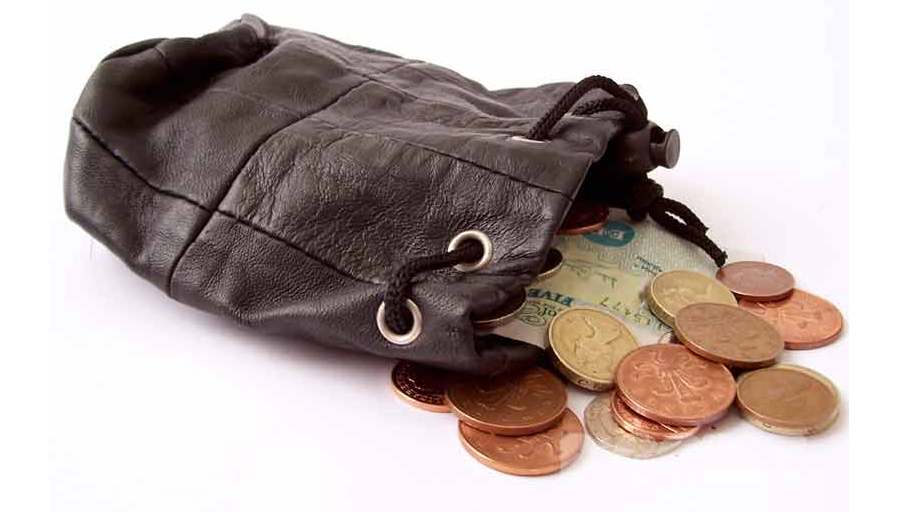
 A Bag (also known regionally as a sack) is a common tool in the form of a non-rigid container. The use of bags predates recorded history, with the earliest bags being no more than lengths of animal skin, cotton, or woven plant fibers, folded up at the edges and secured in that shape with strings of the same material.
A Bag (also known regionally as a sack) is a common tool in the form of a non-rigid container. The use of bags predates recorded history, with the earliest bags being no more than lengths of animal skin, cotton, or woven plant fibers, folded up at the edges and secured in that shape with strings of the same material.
Despite their simplicity, bags have been fundamental for the development of human civilization, as they allow people to easily collect loose materials such as berries or food grains, and to transport more items than could readily be carried in the hands. The word probably has its origins in the Norse word baggi, from the reconstructed Proto-Indo-European bʰak, but is also comparable to the Welsh baich (load, bundle), and the Greek βάσταγμα (bástagma, load).
Cheap disposable paper bags and plastic shopping bags are very common in the retail trade as a convenience for shoppers, and are often supplied by the shop for free or for a small fee. Customers may also take their own shopping bags to some shops. Although paper had been used for purposes of wrapping and padding in ancient China since the 2nd century BC, the first use of paper bags (for preserving the flavor of tea) in China came during the later Tang Dynasty (618–907 AD).
 Bags have been around for hundreds of years and have been used by both men and women. Bags have been prevalent as far back as ancient Egypt. Many hieroglyphs depict males with bags tied around their waist. The Bible mentions pouches, especially Judas Iscariot, carrying one around, holding his personal items. In the 14th century, wary of pickpockets and thieves, many people used drawstring bags, in which to carry their money. These bags were attached to “girdles” via a long cord fastened to the waist.
Bags have been around for hundreds of years and have been used by both men and women. Bags have been prevalent as far back as ancient Egypt. Many hieroglyphs depict males with bags tied around their waist. The Bible mentions pouches, especially Judas Iscariot, carrying one around, holding his personal items. In the 14th century, wary of pickpockets and thieves, many people used drawstring bags, in which to carry their money. These bags were attached to “girdles” via a long cord fastened to the waist.
Women also wore more ornate drawstring bags, typically called hamondeys or tasques, to display their social status. The 14th-century handbags evolved into wedding gifts from groom to bride. These medieval pouches were embroidered, often with depictions of love stories or songs. Eventually, these pouches evolved into what is known as a chaneries, which were used for gaming or food for falcons. During the Renaissance, Elizabethan England’s fashions were more ornate than ever before. Women’s wore their pouches underneath the vast array of petticoats and men wore leather pockets or bagges inside their breeches. Among the Aristocrats, they began carryingswete bagges filled with sweet smelling material to make up for poor hygiene.
 In the modern world, bags are ubiquitous, with many people routinely carrying a wide variety of them in the form of cloth or leatherbriefcases, handbags, and backpacks, and with bags made from more disposable materials such as paper or plastic being used forshopping, and to carry home groceries. A bag may be closable by a zipper, snap fastener, etc., or simply by folding (e.g. in the case of a paper bag). Sometimes a money bag or travel bag has a lock. The bag likely predates the inflexible variant, the basket, and bags usually have the additional advantage over baskets of being fold-able or otherwise compressible to smaller sizes. On the other hand, baskets, being made of more rigid material, may better protect their contents.
In the modern world, bags are ubiquitous, with many people routinely carrying a wide variety of them in the form of cloth or leatherbriefcases, handbags, and backpacks, and with bags made from more disposable materials such as paper or plastic being used forshopping, and to carry home groceries. A bag may be closable by a zipper, snap fastener, etc., or simply by folding (e.g. in the case of a paper bag). Sometimes a money bag or travel bag has a lock. The bag likely predates the inflexible variant, the basket, and bags usually have the additional advantage over baskets of being fold-able or otherwise compressible to smaller sizes. On the other hand, baskets, being made of more rigid material, may better protect their contents.
An empty bag may or may not be very light and foldable to a small size. If it is, this is convenient for carrying it to the place where it is needed, such as a shop, and for storage of empty bags. Bags vary from small ones, like purses, to large ones for use in traveling like asuitcase. The pockets of clothing are also a kind of bag, built into the clothing for the carrying of suitably small objects.
Source :
https://en.wikipedia.org/wiki/Bag